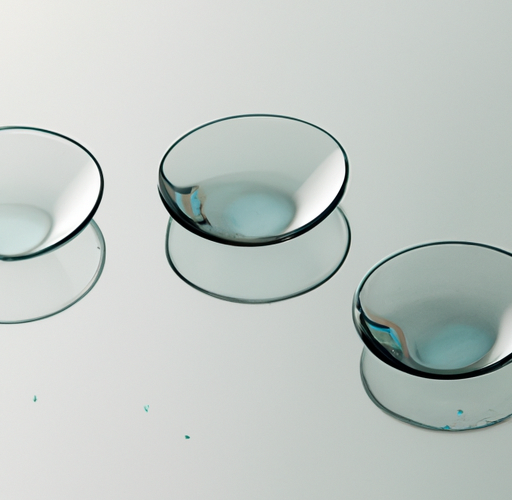Howdy there, fellow earthlings! In today’s piece, we’ll be delving into the wonderful world of contact lens technology. Are you ready to learn about the ins and outs of this revolutionary eyewear option? Let’s get started!
What are contact lenses?
Before we go any further, let’s quickly touch on what contact lenses are. Put simply, contact lenses are small, curved devices that sit directly on the surface of your eye. They’re made from a range of materials, including silicone hydrogel and rigid gas permeable (RGP) plastics.
What are the benefits of contact lenses?
The benefits of contact lenses are vast and varied, but some of the main ones include:
– Enhanced visual acuity: because contact lenses sit directly on the eye, they can offer sharper and clearer vision than glasses in some instances.
– Increased comfort: contact lenses tend to be less obtrusive than glasses, which can be a big plus for people who participate in sports or other physical activities.
– Better peripheral vision: again, because contact lenses sit directly on the eye, they allow for a wider field of vision compared to glasses.
How do contact lenses work?
Now, onto the nitty-gritty of how contact lenses work. Essentially, contact lenses work by correcting refractive errors in the eye. Refractive errors occur when the shape of the eye prevents light from focusing directly on the retina, resulting in blurry vision. Contact lenses (and glasses, for that matter) help to refocus light so that it lands directly on the retina, resulting in clearer vision.
Different types of contact lenses
There are a few different types of contact lenses available, each with its own unique features and benefits. Here are some of the most common types:
– Daily disposable lenses: these are single-use contact lenses that you wear for one day before throwing them away.
– Weekly or monthly disposable lenses: these are contact lenses that you can wear for a week or a month before discarding them.
– Extended wear lenses: these are contact lenses that you can wear continuously for up to a month without removing them.
– Rigid gas permeable (RGP) lenses: these are hard contact lenses that are less flexible but offer superior clarity of vision.
How to care for your contact lenses
Taking care of your contact lenses is crucial for maintaining good eye health. Here are some tips for caring for your lenses:
– Always wash your hands thoroughly before handling your lenses.
– Clean your lenses regularly using a specialist contact lens solution.
– Don’t wear your lenses for longer than the recommended period.
– Store your lenses in a clean, dry case when you’re not wearing them.
Conclusion
Contact lenses are an incredible eyewear option that offer a range of benefits compared to glasses. Whether you choose daily disposable lenses or RGP lenses, taking care of your lenses properly is essential to maintain healthy eyes. We hope this introduction to contact lens technology has been helpful in uncovering the basics of this incredible innovation!

